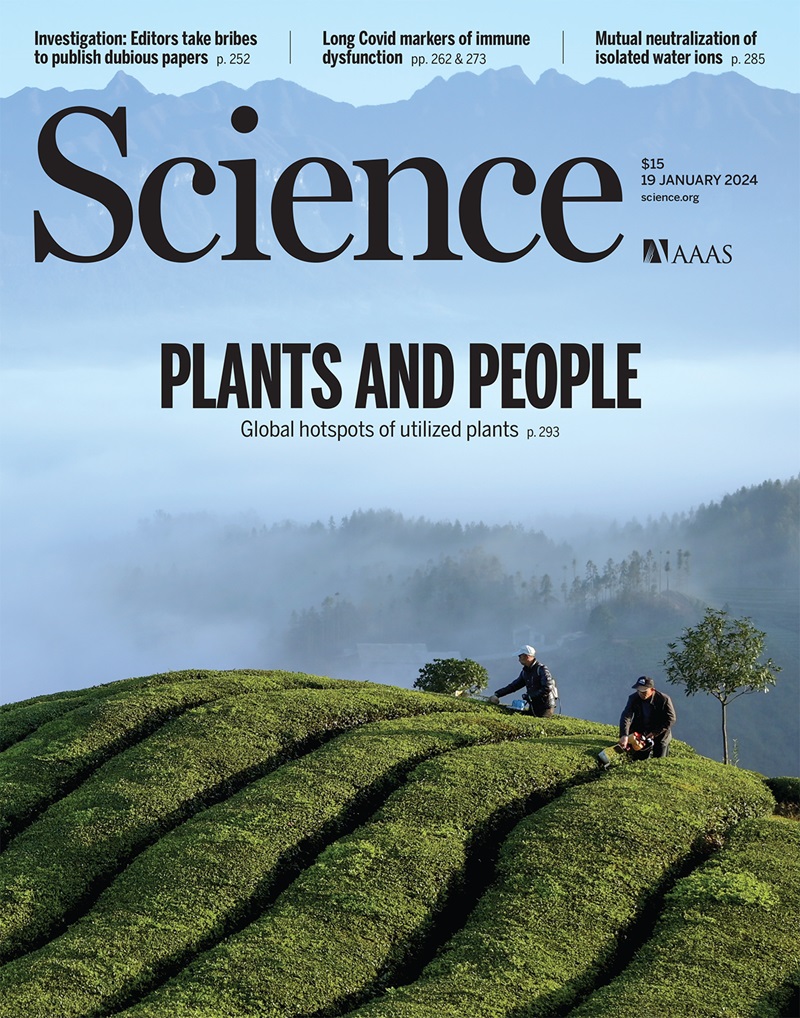利用安卓手机进行全球地震探测和预警
IF 44.7
1区 综合性期刊
Q1 MULTIDISCIPLINARY SCIENCES
引用次数: 0
摘要
地震预警系统越来越多地被用作减少地震损失的一种战略,但是在许多地震易发国家并不存在它们所需的区域地震台网。我们使用全球Android智能手机网络来开发地震探测能力、警报传递系统和用户反馈框架。在3年的运行中,该系统每月平均探测到312次地震,震级从1.9级到7.8级不等。98个国家发布了4.5级以上地震警报,相当于每月约60次地震和1800万次警报。用户反馈显示,85%收到警报的人感觉到了震动,分别有36%、28%和23%的人在震动前、震动中和震动后收到了警报。我们展示了基于智能手机的地震检测算法如何大规模实施,并通过事后分析进行改进。本文章由计算机程序翻译,如有差异,请以英文原文为准。

Global earthquake detection and warning using Android phones
Earthquake early-warning systems are increasingly being deployed as a strategy to reduce losses in earthquakes, but the regional seismic networks they require do not exist in many earthquake-prone countries. We use the global Android smartphone network to develop an earthquake detection capability, an alert delivery system, and a user feedback framework. Over 3 years of operation, the system detected an average of 312 earthquakes per month with magnitudes from M 1.9 to M 7.8 in Türkiye. Alerts were delivered in 98 countries for earthquakes with M ≥4.5, corresponding to ~60 events and 18 million alerts per month. User feedback shows that 85% of people receiving an alert felt shaking, and 36, 28, and 23% received the alert before, during, and after shaking, respectively. We show how smartphone-based earthquake detection algorithms can be implemented at scale and improved through postevent analysis.
求助全文
通过发布文献求助,成功后即可免费获取论文全文。
去求助
来源期刊

Science
综合性期刊-综合性期刊
CiteScore
61.10
自引率
0.90%
发文量
0
审稿时长
2.1 months
期刊介绍:
Science is a leading outlet for scientific news, commentary, and cutting-edge research. Through its print and online incarnations, Science reaches an estimated worldwide readership of more than one million. Science’s authorship is global too, and its articles consistently rank among the world's most cited research.
Science serves as a forum for discussion of important issues related to the advancement of science by publishing material on which a consensus has been reached as well as including the presentation of minority or conflicting points of view. Accordingly, all articles published in Science—including editorials, news and comment, and book reviews—are signed and reflect the individual views of the authors and not official points of view adopted by AAAS or the institutions with which the authors are affiliated.
Science seeks to publish those papers that are most influential in their fields or across fields and that will significantly advance scientific understanding. Selected papers should present novel and broadly important data, syntheses, or concepts. They should merit recognition by the wider scientific community and general public provided by publication in Science, beyond that provided by specialty journals. Science welcomes submissions from all fields of science and from any source. The editors are committed to the prompt evaluation and publication of submitted papers while upholding high standards that support reproducibility of published research. Science is published weekly; selected papers are published online ahead of print.
 求助内容:
求助内容: 应助结果提醒方式:
应助结果提醒方式:


